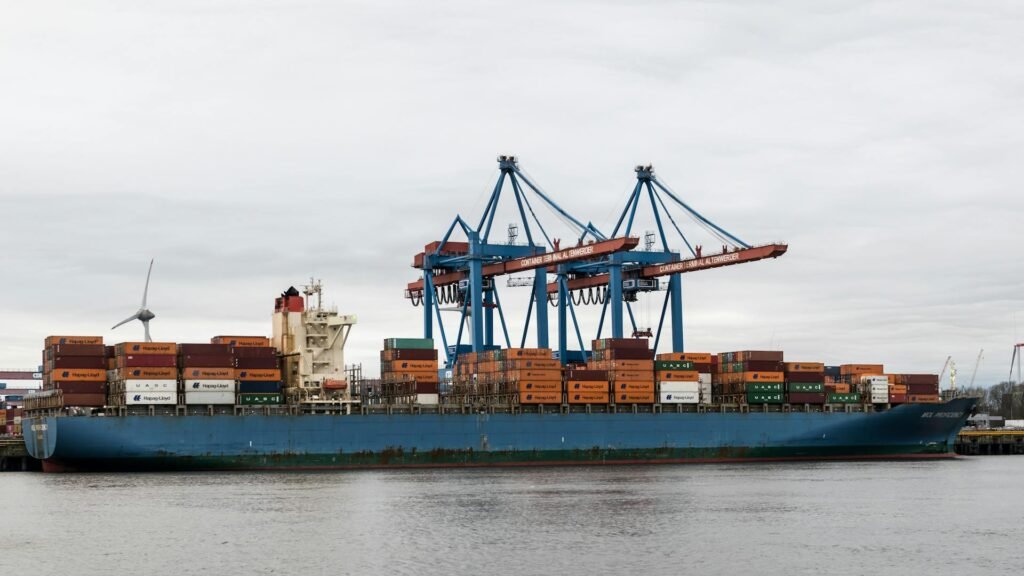
Introduction: It’s More Than Just Weight
Have you ever found yourself asking, “Why did I get a bill that’s higher than the initial quote?” This is a common pain point for many shippers. Freight shipping charges are not as straightforward as one might think. They are not a simple flat rate but a sum of many variables. Understanding these variables is crucial for budgeting and saving money on your shipping costs. This guide aims to demystify the formula carriers use to calculate Freight Shipping Charges, explain all potential fees, and equip you with the knowledge to accurately estimate your shipping expenses.
The Foundation: Chargeable Weight (The Billable Rate)
Carriers determine their charges based on the greater value between the Actual Gross Weight and the Dimensional (Volumetric) Weight of the cargo. Dimensional weight is an important concept because cargo takes up space, and carriers bill for the space it consumes.
To calculate the dimensional weight, you use the formula: (Length x Width x Height) / DIM Divisor. For air freight, a common DIM divisor is 6000. For example, if you have a package with dimensions 100 cm x 50 cm x 30 cm, the dimensional weight would be (100 x 50 x 30) / 6000 = 25 kg.
In ocean freight, the measurement is often in cubic meters (CBM). For trucking LTL, a common divisor is 139 when using inches and pounds. For instance, if a package has dimensions 30 inches x 20 inches x 15 inches, the dimensional weight would be (30 x 20 x 15) / 139 ≈ 65 lbs.
A simple graphic can help illustrate this. Imagine two boxes with the same actual weight, say 50 kg. One box is small and compact, while the other is large and bulky. The large box will likely have a higher dimensional weight, and the carrier will charge based on that higher value.

The 6 Key Factors That Determine Your Freight Shipping Charges
- Origin & Destination: Distance plays a primary role in determining freight charges. Longer distances generally mean higher costs. Additionally, remote locations often incur additional “remote area” surcharges. For example, shipping to a small island or a far – flung rural area may cost more due to the extra effort and resources required for delivery.
- Mode of Transport: Different modes of transport have different cost structures. Air freight is typically faster but more expensive. Ocean freight, whether it’s Full Container Load (FCL) or Less than Container Load (LCL), is more cost – effective for large volumes but has a longer transit time. Rail freight is a good option for certain routes, offering a balance between cost and speed. Trucking, especially for Less than Truckload (LTL) shipments, has its own pricing model based on factors like freight class and weight.
- Freight Characteristics:
- Weight & Dimensions: As mentioned earlier, chargeable weight is a key factor. Larger and heavier shipments generally cost more to transport.
- Commodity Type: Standard goods are usually easier and cheaper to ship. However, items requiring special handling, such as hazardous materials, perishables, or high – value goods, come with additional costs. For example, shipping perishable goods may require refrigerated containers, and shipping hazardous materials needs strict compliance with safety regulations.
- Fuel Costs: Fuel costs have a significant impact on freight charges. Carriers use surcharges like the Fuel Surcharge (FSC) for trucks or the Bunker Adjustment Factor (BAF) for ocean freight. These surcharges are adjusted regularly based on the fluctuating price of fuel.
- Market Conditions: Peak Season Surcharges (PSS) are common during busy times of the year, such as the holiday season. Capacity shortages can also drive up rates. Geopolitical events, like trade disputes or natural disasters, can disrupt the market and cause price fluctuations.
- Required Speed & Service Level: If you need express air freight for urgent deliveries, you’ll pay a premium. On the other hand, choosing standard ocean freight with a longer transit time can save you money. Guaranteed services also tend to be more expensive than economy services.
Breaking Down a Freight Quote: Line – by – Line
- Base Rate/Freight All Kinds (FAK) Rate: This is the core cost for moving your cargo. It forms the foundation of the freight quote.
- Fuel Surcharges (FSC): As mentioned, this is a percentage of the base rate and is adjusted weekly or monthly to account for fuel price changes.
- Origin & Destination Charges:
- Terminal Handling Fees (THC) at ports are common. These fees cover the cost of handling your cargo at the port, including loading and unloading.
- Pickup and Delivery Fees are charged for collecting your cargo from the origin and delivering it to the destination.
- Accessorial Fees (The “Hidden” Costs):
- Liftgate service is required when the delivery location does not have a dock. This service allows for easy unloading of the cargo.
- Residential Delivery often incurs an extra fee because it may be more time – consuming and difficult compared to commercial deliveries.
- Limited Access Delivery, such as to construction sites, may also have additional charges due to the special requirements and challenges of these locations.
- Storage Fees can be applied if your cargo needs to be stored at a warehouse due to customs delays or other reasons.
- Reweigh/Re – inspection Fees are charged if the carrier needs to re – weigh or re – inspect your cargo, usually because the provided dimensions or weight were inaccurate.
- Insurance: While optional, it is highly recommended. Insurance protects your cargo against damage, loss, or theft during transit.
Mode – Specific Calculation Guides
- Air Freight Charges: Air freight charges are mainly based on chargeable weight, with a common DIM divisor of 6000. High fuel surcharges are also a significant part of the cost. Additionally, security fees are often added to ensure the safety of the flight and other cargo.
- Ocean Freight Charges (FCL vs. LCL):
- FCL: For Full Container Load shipments, you pay a flat rate per container, plus origin and destination fees. The size of the container (e.g., 20 – foot or 40 – foot) also affects the cost.
- LCL: Less than Container Load shipments are charged per CBM (cubic meter) or per ton, along with THC and handling fees.
- Trucking (LTL) Charges: Trucking LTL charges are based on freight class, weight, and zip code. Accessorial fees can have a major impact on the final cost. For example, if your shipment requires liftgate service or residential delivery, the charges will increase.
5 Pro Tips to Manage and Reduce Your Freight Shipping Charges
- Optimize Your Packaging: Use the right – size boxes to minimize dimensional weight. Avoid using overly large boxes for small items.
- Be Accurate: Provide precise dimensions and weights to the carrier. Inaccurate information can lead to reweigh fees and higher charges.
- Plan Ahead: Try to avoid peak seasons when rates are higher. Allowing for slower transit times can also help you get better rates.
- Consolidate Shipments: If you have multiple LTL shipments, consider consolidating them into one FTL shipment or using LCL consolidation. This can save you money on per – shipment fees.
- Audit Your Invoices: Regularly check your invoices for duplicate charges or incorrect application of accessorial fees. This can help you identify and correct any overcharges.
Freight Shipping Charges FAQ
- Q: Why was my final bill different from the initial quote?
- A: Usually, it’s due to inaccurate dimensions or weight provided, unexpected accessorial fees, or storage charges caused by customs delays.
- Q: What is the single most important thing I can do to get an accurate quote?
- A: Provide the carrier or forwarder with exact dimensions, weight, commodity description, and precise pickup/delivery addresses (including zip codes).
- Q: Are there any negotiable parts of the freight charges?
- A: Yes, base rates and even some surcharges are often negotiable, especially for high – volume shippers. Working with a freight forwarder can help you leverage their volume discounts.
Conclusion: Knowledge is Power (and Savings)
Understanding the components of Freight Shipping Charges empowers you to become an informed shipper. Instead of being a passive payer, you can make smart decisions to budget and save money on your shipping costs. It’s also important to partner with a transparent freight forwarder or carrier who can guide you through the process.
Need a transparent freight quote? Contact us today for a detailed, bottom – line estimate with no hidden fees.





